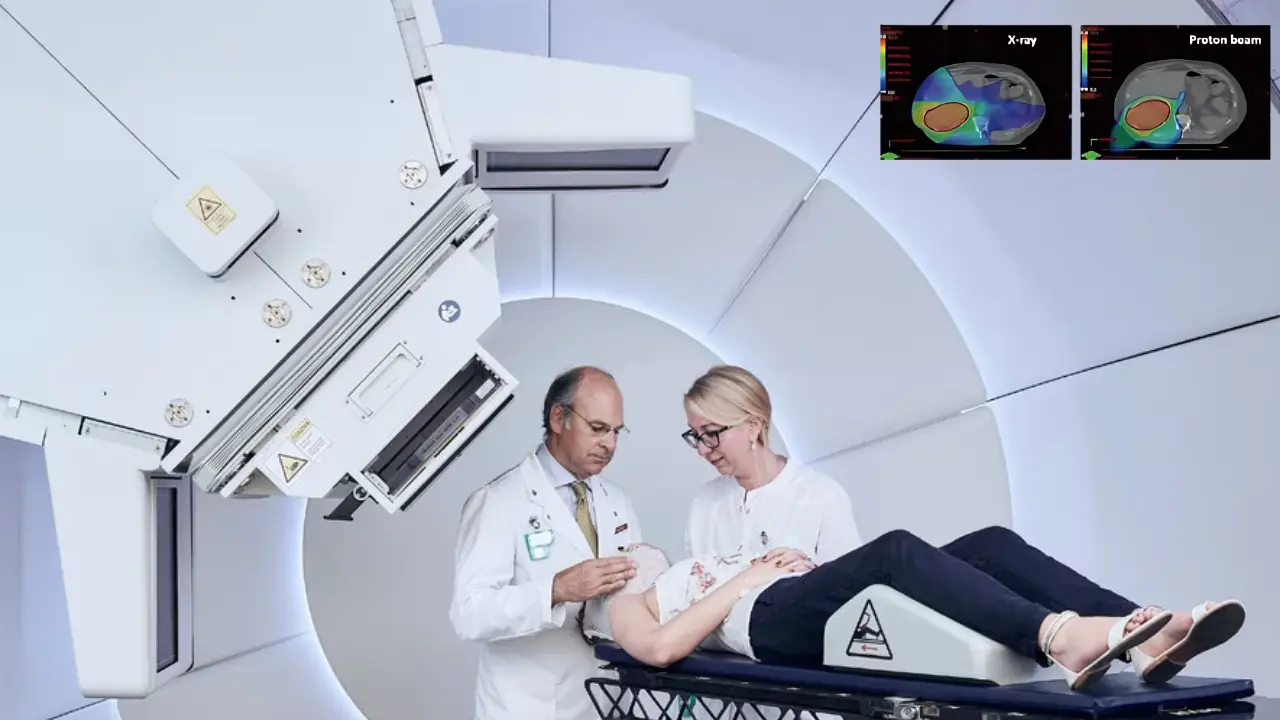What Is Proton Therapy ?
Proton Therapy Liver Cancer, or proton beam therapy, is a type of radiation treatment that uses a beam of protons to deliver radiation directly to the tumor.
Imagine a 196-ton, cancer-killing machine that can target a patient’s tumor with a sub-millimeter precision while sparing nearby healthy tissues and minimizing side effects. In its most simple terms, that’s proton therapy.
Standard radiation therapy has evolved and improved over the years and is effective in controlling many cancers. However, because X-ray beams are composed of primary photons and secondary electrons, they deposit their energy along the path of the beam, to the targeted tumor and beyond, and deliver radiation to healthy tissues before and after the tumor site. This radiation “exit dose” may cause health issues later because it can damage the normal tissue or organs near the tumor or area of concern.
The advantage of proton therapy (also called proton beam therapy) is that the physician can control where the proton releases the bulk of its cancer-fighting energy. As the protons move through the body, they slow down and interact with electrons, and release energy. The point where the highest energy release occurs is the “Bragg peak.” A physician can designate the Bragg peak’s location, causing the most damage to the targeted tumor cells. A proton beam conforms to the shape and depth of a tumor while sparing healthy tissues and organs.
Liver Cancer
Liver cancer, primarily hepatocellular carcinoma (HCC), is a malignancy that often develops in individuals with chronic liver diseases like cirrhosis, hepatitis B, or C. Risk factors include alcohol abuse, obesity, and diabetes. Symptoms may include abdominal pain, jaundice, and weight loss. Early-stage liver cancer may be asymptomatic, making detection challenging. Diagnosis is through imaging, blood tests, and biopsy. Treatment options include surgery, liver transplant, ablation, and chemotherapy, depending on cancer stage and liver function. Early detection and managing underlying liver conditions are key to improving prognosis.
Symptoms Of Liver Cancer
Most people don’t have signs and symptoms in the early stages of primary liver cancer. When signs and symptoms do appear, they may include:
- Losing weight without trying
- Loss of appetite
- Upper abdominal pain
- Nausea and vomiting
- General weakness and fatigue
- Abdominal swelling
- Yellow discoloration of your skin and the whites of your eyes (jaundice)
- White, chalky stools
How Does Proton Therapy Work For Liver Cancer

Proton therapy is a form of radiation therapy that uses protons (charged particles) rather than conventional X-rays to treat cancer. It is increasingly being used for liver cancer due to its precision and ability to minimize damage to surrounding healthy tissues. Here’s how it works for liver cancer:
Principle of Proton Therapy:
Protons instead of X-rays:
Unlike traditional X-ray radiation, which releases energy throughout its path, protons deliver most of their energy at the Bragg peak (a specific point within the tumor). This means the protons release their maximum dose of radiation directly at the tumor site, minimizing damage to the healthy tissues around it.
Precision:
Proton therapy is especially beneficial for tumors located near critical structures (like the liver), where sparing normal tissue is important. The precision allows for higher doses of radiation to be directed at the tumor, potentially improving treatment effectiveness.
How Proton Therapy Works for Liver Cancer
Imaging and Planning:
A detailed imaging study (like CT or MRI scans) is used to map the tumor’s size, shape, and location in the liver. A treatment plan is then created to direct the proton beams precisely at the cancer cells.
Treatment Delivery:
Protons are delivered using a particle accelerator. The patient lies on a treatment table while the proton beam is directed at the liver tumor. Treatment usually takes just a few minutes per session, and the patient typically undergoes multiple sessions over a period of weeks.
Tumor Control and Minimizing Side Effects:
By precisely targeting the tumor and minimizing radiation exposure to surrounding healthy liver tissue, proton therapy helps reduce side effects that can occur with traditional radiation, such as damage to the stomach, intestines, and lungs.
Benefits of Proton Therapy for Liver Cancer
Enhanced Precision:
Proton therapy can target the tumor more accurately, which is particularly useful for liver cancers that are located near critical organs.
Reduced Side Effects:
Healthy tissue around the tumor receives less radiation, leading to fewer long-term side effects.
Effectiveness in Treating Inoperable Tumors:
Proton therapy can be effective for liver tumors that cannot be surgically removed due to their location or size.
Limitations and Considerations
Availability:
Proton therapy requires specialized equipment and is not available at all treatment centers.
Cost:
It tends to be more expensive than conventional radiation therapy.
Combination with Other Treatments:
It is often used in combination with surgery, chemotherapy, or other therapies to improve outcomes.


